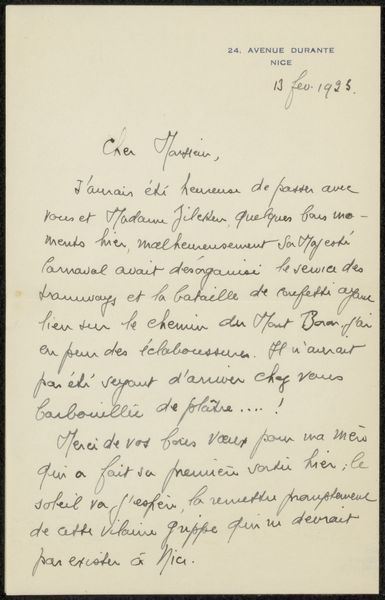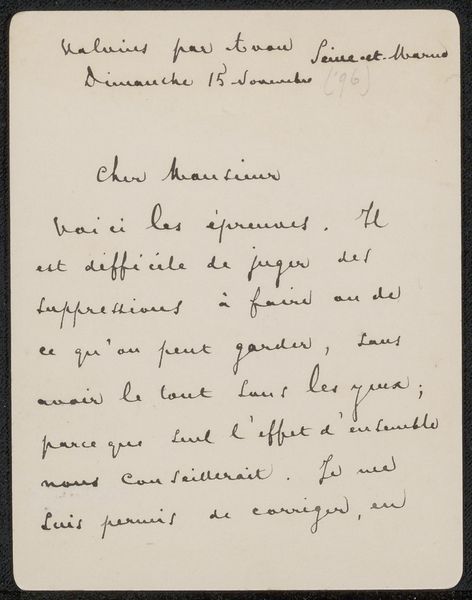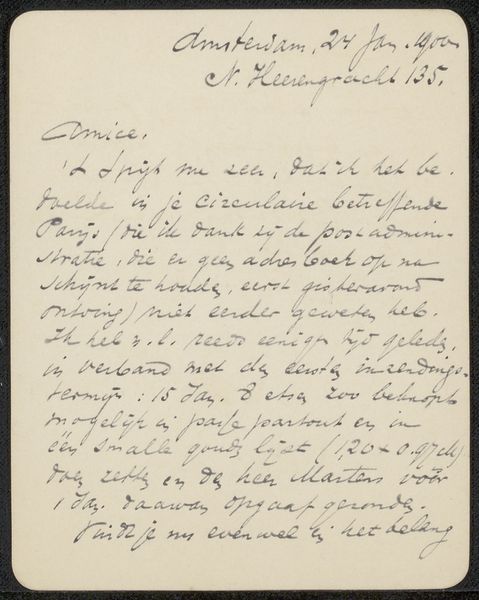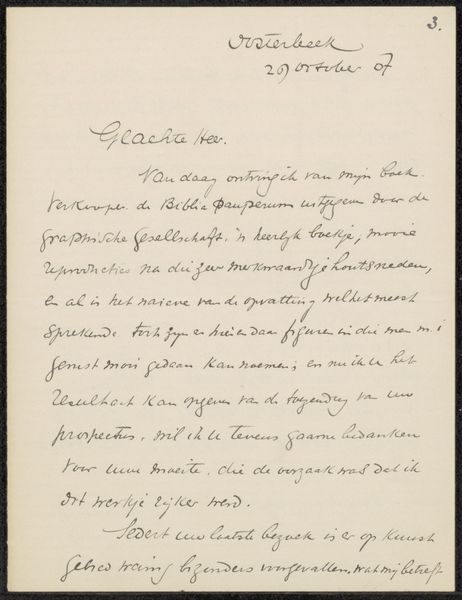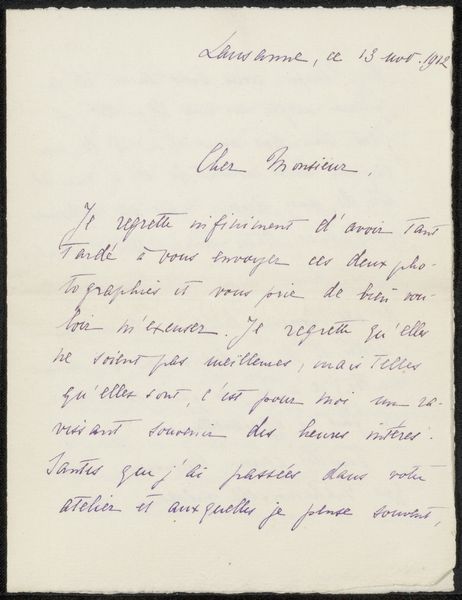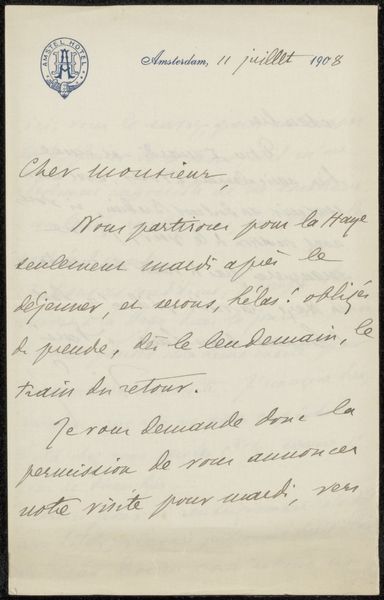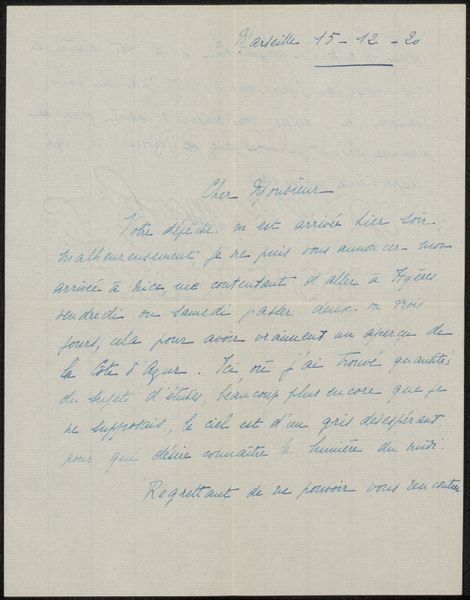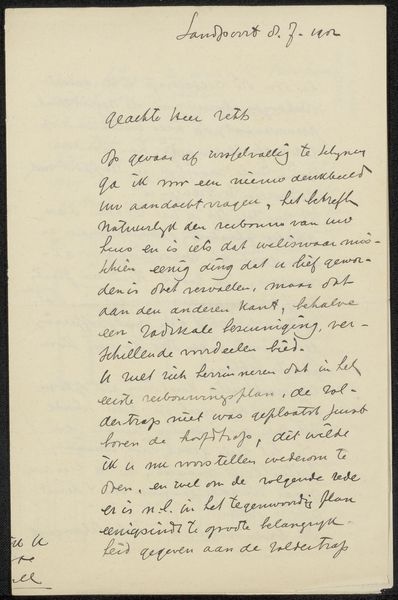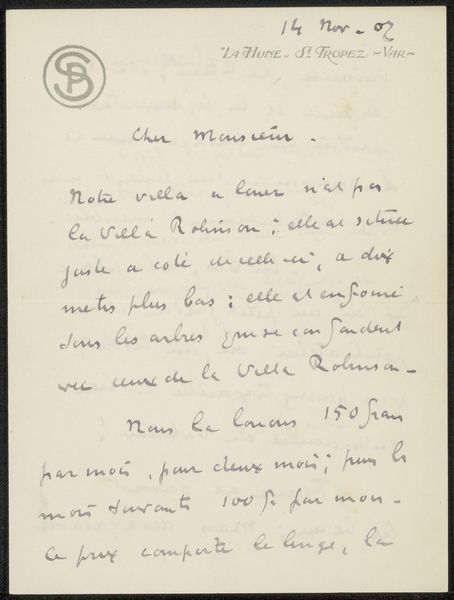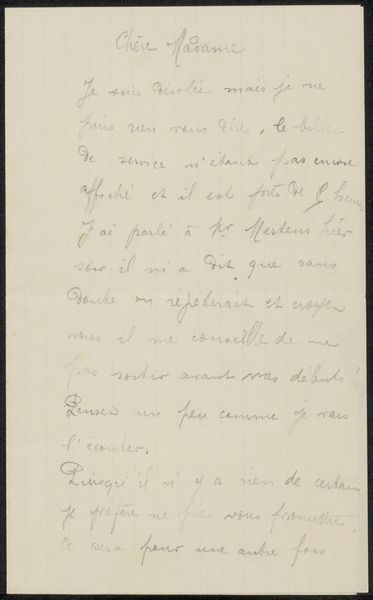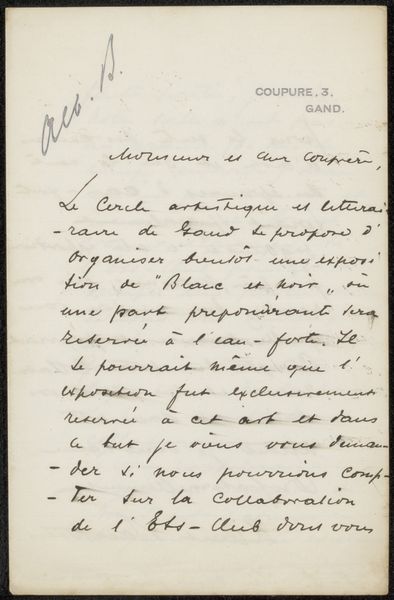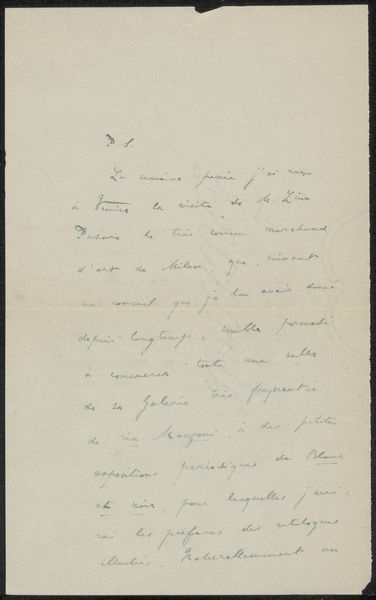
drawing, paper, ink, pen
#
drawing
#
old engraving style
#
hand drawn type
#
paper
#
personal sketchbook
#
ink
#
hand-drawn typeface
#
ink drawing experimentation
#
intimism
#
pen-ink sketch
#
ink colored
#
pen work
#
sketchbook drawing
#
pen
#
sketchbook art
#
calligraphy
Copyright: Rijks Museum: Open Domain
Curator: Before us, we have "Brief aan Philip Zilcken," which translates to "Letter to Philip Zilcken." It's believed to be from around 1898. Baronne Madeleine Deslandes penned it using ink on paper. It also incorporates the aesthetics of calligraphy. Editor: My first impression? A whisper. Like stumbling upon a secret, a heartfelt confession captured on a fragile page. Curator: Precisely. This piece offers an intimate glimpse into Deslandes’ world. Considering the social constraints placed upon women of her status, the letter becomes a quiet act of rebellion, of claiming a voice. Who was Philip Zilcken in her world and, more importantly, what did her tone accomplish? Editor: Ooh, intrigue! To me, it's the kind of handwriting you'd expect from someone writing by candlelight, fueled by strong coffee and a burning desire to share something before dawn. A quick sentiment with elegant penmanship, though there is an immediacy. It feels very "in the moment." Curator: Absolutely, there is that raw intimacy we recognize. I want to draw your attention to the stylistic elements; notice the penmanship and layout of the script. The integration of hand-drawn typeface speaks to broader movements in fin-de-siècle art, where the boundaries between fine art and design blurred. We might understand her art through feminist literary theory, understanding letters and textual practices as spaces of female authorship and creativity during the era. Editor: I love how the text seems to dance on the page. It has rhythm, you know? Looking closer, I'm getting a distinct "intimist" vibe, with her focus on a tiny, personal world... Curator: Exactly! Its classification in "intimism" isn’t accidental. Her private reflections can serve as powerful reminders to modern audiences about art, intimacy, gender and personal expression, particularly when one's public actions are limited by restrictive norms and power imbalances. Editor: Thinking about how intimate and delicate her creation process must have been—tracing those little ink letters... it makes the modern concept of digital communication seem awfully cold. Curator: In the grand tapestry of art history, Deslandes’ “Letter to Philip Zilcken” is an affirmation, and perhaps, an insistence of belonging within and contribution to artistic circles. Editor: Well, it reminds me that sometimes the smallest gestures speak the loudest. I appreciate getting to witness something so authentic.
Comments
No comments
Be the first to comment and join the conversation on the ultimate creative platform.
